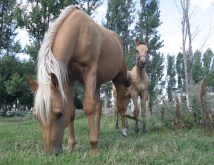Rabies is an almost always fatal disease of warm-blooded animals and its range extends throughout most of the world.
The most susceptible animals are cattle, skunks, bats, members of the dog family and raccoons. Although wild animals are the primary reservoir, it is usually domestic animals that are most likely to infect humans.
Rabies is caused by a rod-shaped virus that can’t survive by itself in the environment. The rabies virus must contact the nervous system of its host before infection can be established. Usually this means contamination of a wound with saliva containing rabies virus from an infected animal. However, transmission can also occur by air droplets or by ingestion.
Read Also

Worrisome drop in grain prices
Prices had been softening for most of the previous month, but heading into the Labour Day long weekend, the price drops were startling.
The time between transmission of the disease and the onset of symptoms can range from one week to more than a year, but usually it takes three to eight weeks, depending on the location of the bite. The closer to the head the bite is, the shorter the incubation period.
The virus begins travelling up the nerve fibres toward the head and, once there, leads the animal to exhibit some abnormal behaviours. Once in the brain, the virus multiplies and travels to the salivary glands, where the cycle of transmission can be repeated.
Once the virus is in the brain, abnormal behaviours are seen. Wild animals lose their sense of fear. Some become excitable and hyperactive and may try to bite. They can also seem to lose sense of their surroundings and appear dull and depressed. Sometimes they can become paralyzed, usually starting in the hind legs and then moving forward toward the head. The animal usually dies in less than a week.
Confirmation of rabies is usually done by microscopic examination of the brain using special stains that cause the infected portions of the brain to fluoresce a greenish-yellow colour.
Treatment of animals is usually not attempted. Dogs with signs suggestive of rabies are usually put in isolation to prevent transmission to humans or other animals and monitored. Government veterinarians have the power to destroy highly suspicious animals and test their brains.
Fortunately, vaccination for rabies is effective. Dogs and cats are usually vaccinated at three to four months of age, one year later and then annually or every three years, depending on which type of rabies vaccine is used. The sale of rabies vaccine is allowed only to a licensed veterinarian, who administers the shot.
People with high risk occupations, such as veterinarians, are also given rabies vaccinations. Periodically, vets have blood samples taken to see whether their rabies antibodies are high enough to afford protective levels or if a vaccination is warranted.
Veterinarians are often the first to be involved in the assessment and reporting of suspicious cases. Once an animal has signs of rabies, it is put in isolation, often for a period of 10 days and a government district veterinarian is notified.
The World Health Organization says saliva from infected animals is considered infectious for 10 days before the onset of symptoms. This means the animal’s history should be reviewed for possible victims of exposure.
Daryl Meger is a veterinarian and out-doors enthusiast in a mixed animal practice in Westlock, Alta.














